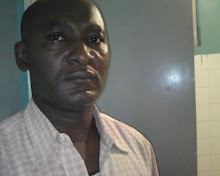Tips on how to reduce your electricity bill:
To start with, you should know that
for these tips to work for you; you need a prepaid meter installed.
Without a prepaid meter, your bill
pretty much runs on estimates and leaves you with little room to contest its
accuracy.
If you want to save power, start by
getting a prepaid meter installed at home.
1. Remove all plugs and turn off
switches:
Many don’t know this but turning off
a device while leaving it plugged in does not cut off the power supply. The
device still consumes residue energy called vampire or standby power. To avoid
this, cut off power to a device by turning off the socket and the device’s
power switch.
2. Replace all your bulbs at home
with energy-efficient models:
Although non-energy-efficient bulbs
are cheaper to purchase, they become more expensive in the long run to use.
This is because they consume far more power than energy-saving bulbs.
For
example, the average wattage of an ordinary bulb is around 60 to 200. However,
energy-saving bulbs are as low as 7 to 11 watts. This means that one would
consume more than ten times the other’s power; the choice is yours.
Also,
it would help if you become more cautious with how long you leave your bulb on.
Turn them off during the day, and when you want to sleep at night; especially
your kitchen, toilet and bathroom lights. Only leave security lights on.
3.
Limit your fan and Air conditioner’s runtime:
The
ceiling fan is one of the home’s highest passive power consumers. You might not
know it, but your fan practically runs all day and night, which significantly
impacts your power bills.
One
thing you can do is replace all your fans with energy-efficient models if you
have the means. However, if you don’t have the energy-efficient model, simply
regulate how long the fan runs.
The
energy-consuming capacity of an air conditioner is well known. Keep it running
for a day, and it would make a telling impact on your bills. A 1.5hp
(1119watts) Ac running for 10 hours at a rate of N60 per kilowatt would cost
you well over N30,000 alone. You can shuffle run time between your fan and air
conditioner, depending on how many units you purchase per month. Limiting your
fan to running only about 8 hours a day can save you hundreds of naira.
4.
Revisit your refrigerator:
This
is another appliance that consumes the most power at home. The average watt
consumption of a refrigerator is 1200 watts per day (depending on the model),
which means they consume one of, if not the highest power at home. You can
reduce consumption by purchasing a smaller freezer, which is the more expensive
approach or doing the following:
Move
the refrigerator to an area with adequate air circulation, as it helps it
become more power-efficient.
Your
fridge should also be at least 2 inches away from the wall and not stand
directly exposed to sunlight.
Another
thing you should do is not stuff up your refrigerator. This reduces the overall
efficiency of the unit because of the lesser space available for air
circulation. It also means that the unit would draw more power to meet the
demand. Ensure you defrost the fridge regularly too
Asides
from the tips mentioned in this article, you should also sit down to study your
home. If possible, create a list of all your appliances and their watt rating.
Start trimming down consumption by replacing the device with a more
energy-efficient model, or reducing its use.
5. Air conditioner.
This
is an equipment that gulps your energy. Set your temperature to a temperature
for the ac to breath. It discharges and maintain the minimum consumption by
switching the compressor off and then on again. It is very important to note
that the major cause of switch burnt result from switching the system off
directly from the wall switch. The switch get warmed up during use. Avoid flipping
the switch while warm. This will make the internal component to shift and once
dried at that point it get stucked and will not power up again. The best way to
power it off is from the remote control then, the wall switch. This applies to
other heating switches..
6.
Cooker switch.
The
cooker unit comes with a standard switch designed to handle the flicker. Always
switch off from it own switch before flipping the wall socket.
7.
Summary.
Replace
your old device after few years use to a new more modern. This is because the
manufactures always develop a low power consuming but more efficient device.
